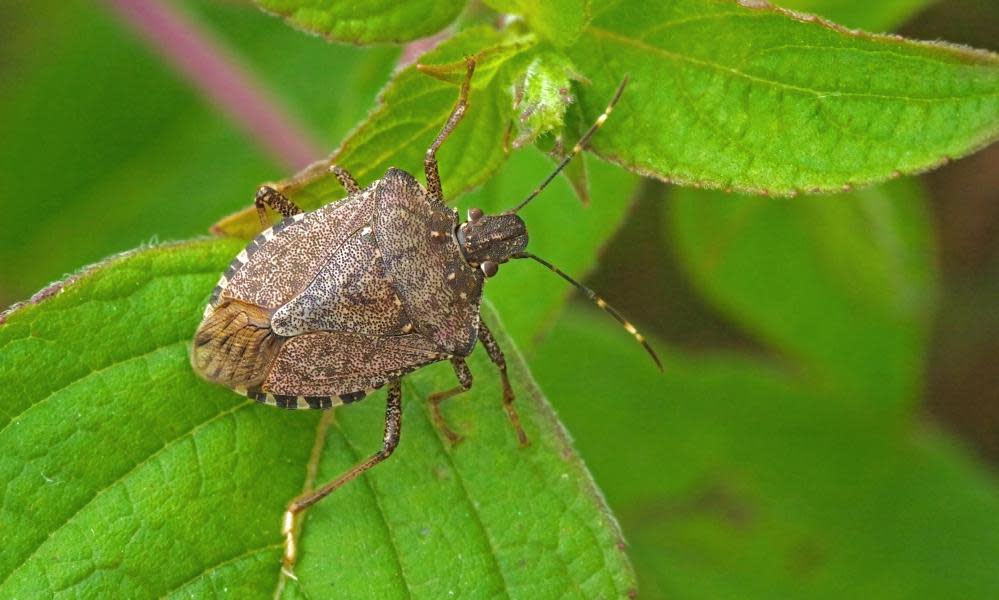UK scientists confirm arrival of brown marmorated stink bugs

It is brown, stinky and will strike fear into the hearts of apple and other fruit growers.
Scientists have now confirmed that the brown marmorated stink bug (Halyomorpha halys), a small flying insect that emits an unpleasant almond-like odour, has arrived in Britain, after most probably hitching a ride on packaging crates.
The insect, which looks similar to native shield bugs, is considered a pest in the US and in its south-east Asian home because it creates brown marks on fruit and vegetables from apples to cucumbers that make them less aesthetically pleasing for buyers and reduce their value.
The invasive stink bug will also worry Britain’s burgeoning wine industry because if significant numbers move into bunches of grapes their smell – a defence mechanism – can contaminate the delicate flavours of a wine.
The brown marmorated stink bug was discovered in the gardens of the Natural History Museum on one of the hottest days last year and has since turned up at a house in Surrey. Its spread has been mapped by the scientists at the museum and the horticultural research institute NIAB EMR in a British Journal of Entomology and Natural History paper.
Watch: Bugs look for warm places to spend winter
Max Barclay, the senior curator in charge of Coleoptera, predicted in 2014 that it was only a matter of time before the stink bug arrived. Now it has, he said it would not be possible to eradicate it.
“They’ll establish pretty quickly, we’ve seen this in a lot of invasive species before. You find one or two and then they are everywhere,” he said. “The harlequin ladybird from China arrived in 2006, and now they are enormously abundant.”
According to Barclay, because stink bugs move indoors to hibernate during the winter, they will have arrived in packaging, pallets and shipping crates from global trade.
With its mottled brown shield-shaped casing, the brown marmorated stink bug is similar looking to native shield bugs and another recent arrival, the mottled shield bug which arrived from Europe in 2011.
“We have larger shield bugs in the UK but none of our native species are agricultural pests of any significance at all,” said Barclay. “But this goes for a wide range of fruit and vegetables so people are quite concerned about it.”
The stink bug reached the United States in 1998 and rapidly established itself as an agricultural pest, with its feeding damage calculated to have caused $37m (£26.5m) of apple losses in 2010.
But Barclay said the bug’s numbers were likely to settle down again after an initial “invasion”.
“The harlequin ladybird population spiked and is now declining again. This happens because the predators and parasites and diseases that are associated with these things eventually catch up with them. The invasive species makes a nuisance of itself before gradually moving into the background and becoming part of the established fauna.”
“With climate change and global trade these stores are going to become more frequent.”
Members of the public are invited to submit photographs of potential sightings to the Natural History Museum’s biodiversity Facebook group so scientists can confirm identifications and monitor the stink bugs spread.
Watch: How to start a beehive

 Yahoo Movies
Yahoo Movies 
